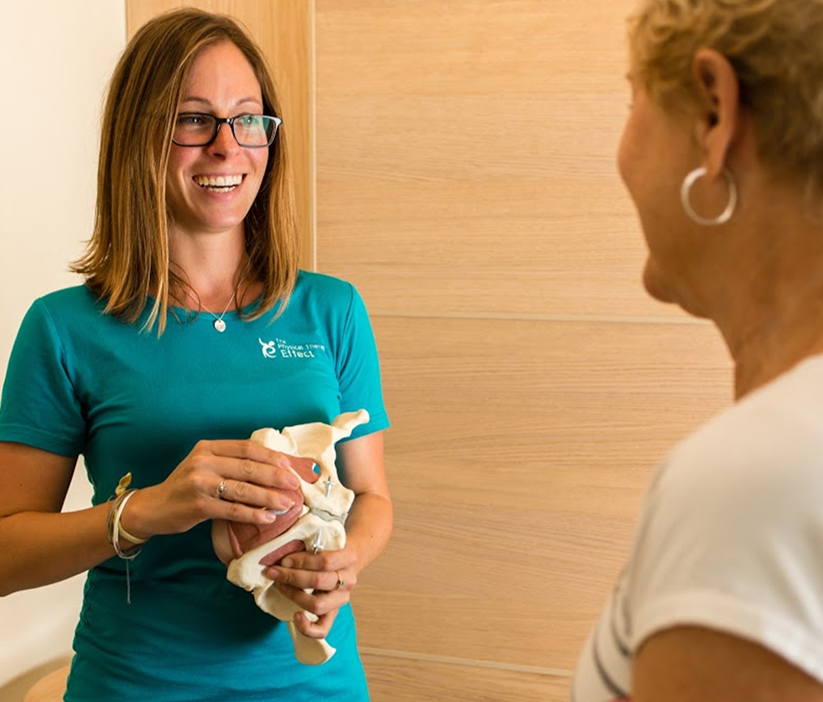How to Manage Pelvic Floor Pain
Feb 18, 2021

Pelvic floor pain can be chronic and have a negative impact on the lives of people who suffer from it. For some, surgery or prescription medication may be the only way to manage the pain. However, there are some methods you can use at home to manage pelvic floor pain.
What Is the Pelvic Floor?
The pelvic floor is a series of muscles that support the bladder, uterus, prostate, and bowels. These muscles are what allow people to control when urine and feces are released from the body. When the muscles contract, they lift up the organs and keep the openings to the urethra, vagina and anus tightened so that nothing leaks out. When the muscles are relaxed, feces and urine can be released.
What Causes Pelvic Floor Pain?
Pelvic floor pain can occur in either women or men. While pelvic pain can be a symptom of a medical condition or disease or even caused by nothing at all, pelvic floor pain is often a symptom of pelvic floor dysfunction.
What Is Pelvic Floor Dysfunction?
Pelvic floor dysfunction occurs when someone is unable to control the pelvic floor muscles. This means that a person suffering from pelvic floor dysfunction isn’t able to properly relax the pelvic floor muscles in order to easily urinate or defecate. The condition can occur in both women and men and affects the bladder, rectum, and either vagina or prostate. Pelvic floor dysfunction can cause difficulty making bowel movements, urinating, or, especially for women, having sex. If the condition isn’t treated, it can cause damage to the colon or cause infections.
What Are the Symptoms of Pelvic Floor Dysfunction?
The symptoms of pelvic floor dysfunction include:
- Constipation
- Bowel straining
- Painful urination
- Frequent urge to urinate
- Pressure in the rectum or pelvis
- Pain in the rectum, genitals, or pelvis
- Pain in the lower back
- Pelvic muscle spasms
- Painful sex (for women)
What Are the Causes of Pelvic Floor Dysfunction?
It’s unknown exactly what causes pelvic floor pain and pelvic floor dysfunction. However, doctors have been able to connect pelvic floor dysfunction to either events or conditions that can tear the pelvic floor connective tissues or weaken the pelvic floor muscles. These possible causes can include:
- Nerve damage
- Traumatic injury to the pelvis
- Childbirth
- Obesity
- Surgery to the pelvic region
Does Pelvic Floor Pain Require a Doctor’s Diagnosis?
Because pelvic floor pain can be caused by other conditions, it’s important for people who suspect they may have pelvic floor dysfunction to speak to a doctor about the pain they’re experiencing. While it is likely to be pelvic floor dysfunction, it may be caused by something else. Proper treatment and management of your pelvic floor pain require an accurate diagnosis. If you have chronic pain in the pelvis or pelvic floor, see your doctor.
How Can I Manage Pelvic Floor Pain?
For some, a prescription of pain medication or surgery may be the best option for treating pelvic floor pain or dysfunction. Whether you have medication or are scheduled for surgery, there are some techniques for managing the pain that you can do at home.
Avoid Straining
When using the bathroom, avoid straining or pushing too hard. This can cause further strain on your pelvic floor muscles and further compound the problem. Kegel exercises, while helpful with pelvic floor control following childbirth, are not helpful if you have pelvic floor dysfunction.

Yoga
Yoga is good for stretching muscles all over your body and can benefit your pelvic floor muscles. Another benefit of yoga is that it can also help you relax. The stretching and relaxation benefits of yoga can affect your whole body but can also relax and stretch your pelvic floor muscles in particular.

Moderate Exercise
Thirty to forty-five minutes of moderate exercise can help reduce pelvic floor pain. Exercise releases endorphins, or “feel-good” chemicals, which can help reduce pain. Exercise also improves blood flow, which can help manage the pain. Speed walking is a good moderate exercise.

Take a Warm Bath
The hot water from a bath can help relax your muscles and improve blood flow. If you don’t have a bathtub, you can substitute a warm compress or a heating pad in the area that’s painful.
Take Vitamin Supplements
Pelvic pain may be linked to vitamin deficiencies. Taking supplements to make sure that you’re getting enough of the vitamins you need may help with the pain. It also may improve your overall health if you are deficient in a necessary vitamin. Vitamin D, vitamin E, and Magnesium supplements, in particular, may help with pelvic pain.
Practice Self-Care
If you have any habits that can impact your health negatively, such as smoking or drinking alcohol, now is a good time to stop. Obesity can also cause pelvic pain, so eating healthier and exercising to lose weight can help.
For informational purposes only.











